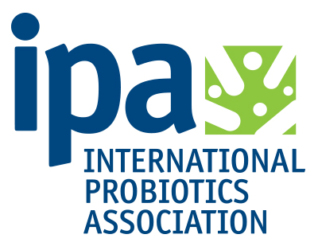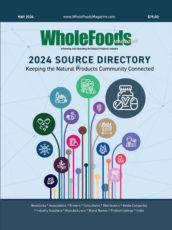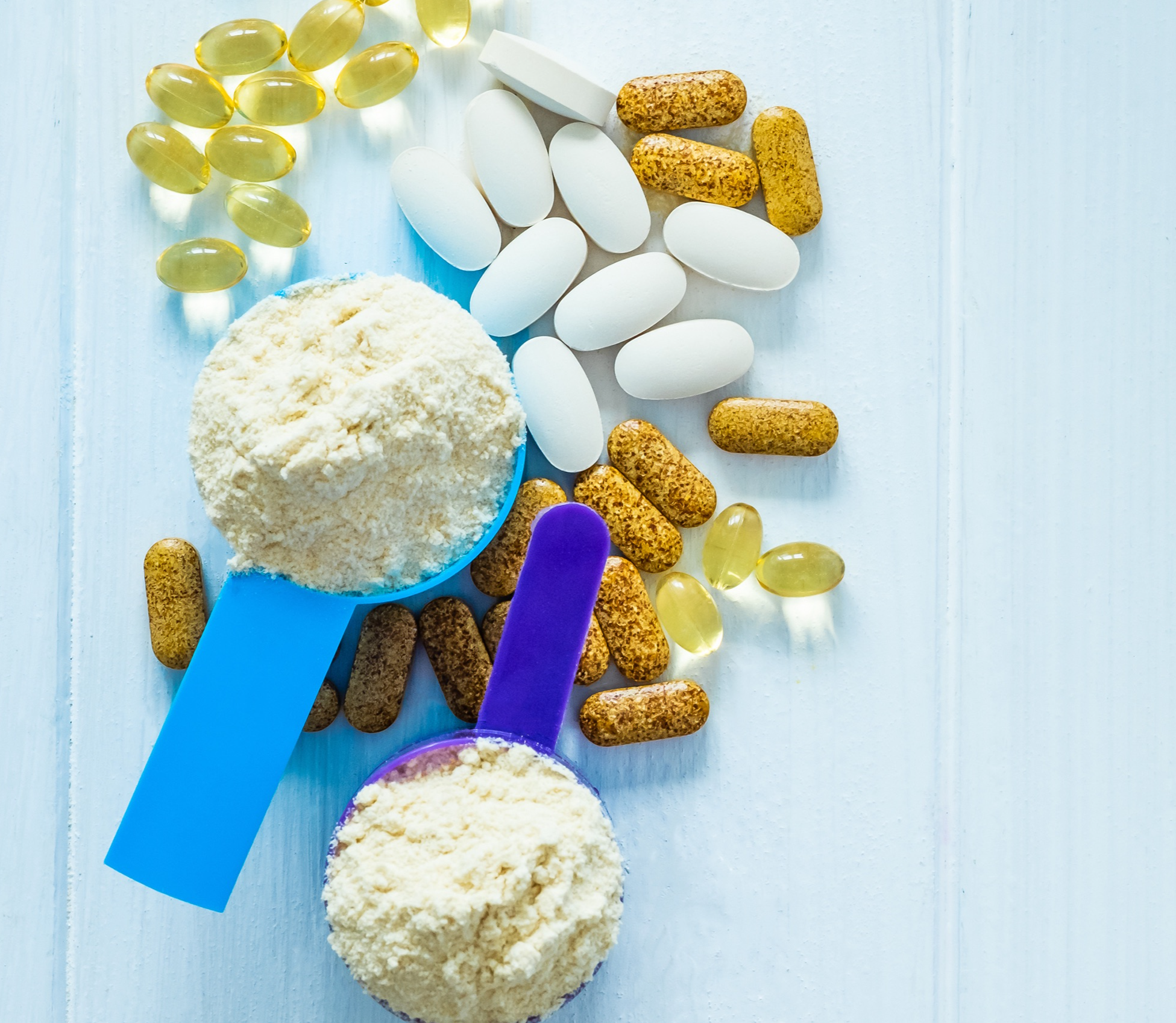
Quicklinks
WholeFoods Magazine
Polycystic Ovary Syndrome and the Gut Microbiome

One of the most common endocrine disorders, polycystic ovary syndrome (PCOS) affects about 5% to 10% of women of reproductive age worldwide. Associated with multiple chronic diseases as well as infertility and pregnancy complications, PCOS is in need of better understanding and therapies. To that end, a relationship between PCOS and dysbiosis of the gut microbiome (GM) suggests that modulation with prebiotics and probiotics may be a potential therapeutic target.
To diagnose this disorder, two of the following must be present:
At a community level, these differences are seen in diversity—alpha and beta—as well as relative abundance of bacterial taxa. Review authors Maryan G Rizk and Varykina G Thackray report that a “decrease in biodiversity as well as changes in specific bacterial taxa are associated with PCOS, findings supported in many studies. Moreover, gut dysbiosis occurs both in adolescent girls and women with this disorder that are normal weight or obese, though it is unclear if obesity influences these changes.”
Multiple studies report correlations between HA and changes in the gut microbiome. Both alpha diversity and beta diversity were associated with HA, indicating that higher testosterone levels are linked with changes in the overall composition of the gut microbial community. It is unclear whether testosterone exerts an effect on gut microbes directly and/or indirectly through actions in androgen target tissues.
The two hypotheses are likely interconnected.
Though extremely limited, studies have examined metabolite profiles in women with PCOS compared with healthy controls.
Gut bacterial metabolites altered in PCOS include secondary bile acids, short-chain fatty acids, and trimethylamine.
These findings may offer novel targets for metabolite therapy focused on PCOS.
Guo, Yanjie et al. “Association between Polycystic Ovary Syndrome and Gut Microbiota.” PloS one vol. 11,4 e0153196. 19 Apr. 2016, doi:10.1371/journal.pone.0153196
Qi, Xinyu et al. “Gut microbiota-bile acid-interleukin-22 axis orchestrates polycystic ovary syndrome.” Nature medicine vol. 25,8 (2019): 1225-1233. doi:10.1038/s41591-019-0509-0
Rao, Preetham, and Priya Bhide. “Controversies in the diagnosis of polycystic ovary syndrome.” Therapeutic advances in reproductive health vol. 14 2633494120913032. 29 Jun. 2020, doi:10.1177/2633494120913032
Rizk, Maryan G, and Varykina G Thackray. “Intersection of Polycystic Ovary Syndrome and the Gut Microbiome.” Journal of the Endocrine Society vol. 5,2 bvaa177. 16 Nov. 2020, doi:10.1210/jendso/bvaa177
Teede, Helena J et al. “Recommendations from the international evidence-based guideline for the assessment and management of polycystic ovary syndrome.” Human reproduction (Oxford, England) vol. 33,9 (2018): 1602-1618. doi:10.1093/humrep/dey256
Tremellen, Kelton, and Karma Pearce. “Dysbiosis of Gut Microbiota (DOGMA)--a novel theory for the development of Polycystic Ovarian Syndrome.” Medical hypotheses vol. 79,1 (2012): 104-12. doi:10.1016/j.mehy.2012.04.016
Wolf, Wendy M et al. “Geographical Prevalence of Polycystic Ovary Syndrome as Determined by Region and Race/Ethnicity.” International journal of environmental research and public health vol. 15,11 2589. 20 Nov. 2018, doi:10.3390/ijerph15112589
Xue, Jing et al. “Inulin and metformin ameliorate polycystic ovary syndrome via anti-inflammation and modulating gut microbiota in mice.” Endocrine journal vol. 66,10 (2019): 859-870. doi:10.1507/endocrj.EJ18-0567
Zhang, Jiachao et al. “Probiotic Bifidobacterium lactis V9 Regulates the Secretion of Sex Hormones in Polycystic Ovary Syndrome Patients through the Gut-Brain Axis.” mSystems vol. 4,2 e00017-19. 16 Apr. 2019, doi:10.1128/mSystems.00017-19
Clare Fleishman RDN, MS is a Registered Dietitian with the Academy of Nutrition and Dietetics and holds a master degree in nutrition science. She bridges the gap between science and health across most platforms: major newspapers, magazines, books, workshops, social media and websites. From corporate whiteboards to refugee schools in Egypt, Fleishman agitates for personal and public change. In 2010, she launched www.ProbioticsNow.com to share the cascade of new discovery in the microbiome. Always amazed at this “forgotten organ” Fleishman also creates white papers, blogs, videos and social media for the International Probiotics Association as well as continuing education platforms.
PCOS, in brief
Common symptoms include irregular menstrual cycle, polycystic ovaries, and hirsutism as well as an increased risk for a multitude of conditions, including insulin resistance (IR) and dyslipidemia. And as mentioned above, women with PCOS are also at a higher risk for infertility and pregnancy complications.To diagnose this disorder, two of the following must be present:
- hyperandrogenism
- oligo-ovulation or anovulation
- polycystic ovaries
Changes in gut microbiota linked with PCOS
Less than a decade ago, a connection between dysbiosis of the GM and PCOS was proposed by several researchers. Multiple studies in humans and rodents since then have provided evidence of changes in the GM linked with PCOS.At a community level, these differences are seen in diversity—alpha and beta—as well as relative abundance of bacterial taxa. Review authors Maryan G Rizk and Varykina G Thackray report that a “decrease in biodiversity as well as changes in specific bacterial taxa are associated with PCOS, findings supported in many studies. Moreover, gut dysbiosis occurs both in adolescent girls and women with this disorder that are normal weight or obese, though it is unclear if obesity influences these changes.”
Hyperandrogenism (HA) and microbes
The etiology of PCOS is not known. However, two hypotheses connect the development of hyperandrogenic PCOS phenotypes to changes in the gut microbiome.Hypothesis #1
Dysbiosis leads to inflammation through disruption of the gut barrier, which in turn may lead to IR, HA, and ovarian dysfunction. In a recent study, a dysbiotic gut microbiome from women with PCOS or Bacteroides vulgatus (positively associated with PCOS in antibiotic-treated mice) transplanted into mice induced a PCOS-like phenotype (HA, disrupted estrous cycle, decreased ovulation, ovarian cysts, and a decrease in fertility.) However, rather than using germ-free mice, the researchers depleted the GM with antibiotics, which have been shown to affect metabolism in mice.Hypothesis #2
A second hypothesis is that HA leads to gut dysbiosis in association with the development of PCOS.Multiple studies report correlations between HA and changes in the gut microbiome. Both alpha diversity and beta diversity were associated with HA, indicating that higher testosterone levels are linked with changes in the overall composition of the gut microbial community. It is unclear whether testosterone exerts an effect on gut microbes directly and/or indirectly through actions in androgen target tissues.
The two hypotheses are likely interconnected.
Microbial metabolites associated with PCOS
Gut microbes metabolize substrates from the diet and the host. Metabolites are produced that may act directly on the intestines or enter systemic circulation and influence various host tissues whose function is altered in PCOS (including ovary, skeletal muscle, liver, and adipose tissue).Though extremely limited, studies have examined metabolite profiles in women with PCOS compared with healthy controls.
Gut bacterial metabolites altered in PCOS include secondary bile acids, short-chain fatty acids, and trimethylamine.
These findings may offer novel targets for metabolite therapy focused on PCOS.
Treatments of gut dysbiosis in PCOS
- Fecal microbial transplant (FMT): Several studies using FMT from healthy donors or representative microbes from a healthy gut transplanted into a PCOS rodent model revealed it may be useful to re-diversify the gut microbiome.
- Prebiotics: Resistant dextrin when given to women with PCOS and women without the disorder for three months lowered levels of free testosterone, hirsutism, the interval between menstrual cycles, fasting blood glucose, and lipid profile in group with PCOS; however changes in alpha diversity or the RA of specific microbes was not assessed in this study. Additionally, in another recent study, inulin was shown to improve gut dysbiosis, lower testosterone, and increase estradiol levels while improving ovarian morphology and weight gain in mice fed a high-fat diet.
- Probiotics: A strain of Bifidobacterium lactis given as a 10-week treatment for PCOS in 14 women with the disorder decreased luteinizing hormone and increased intestinal short-chain fatty acids in a new study. In another study, Lactobacillus given to letrozole-treated (induces PCOS) rats reduced androgen levels, improved estrous cyclicity, normalized ovarian morphology, as well as increased Lactobacillus and Clostridium species and decreased Prevotella.
- Probiotic combinations given in several studies investigating the effects on PCOS phenotypes showed positive results.
Takeaway
Changes in gut microbiota are associated with PCOS and correlated with HA, indicating that elevated levels of testosterone may regulate the composition of the gut microbiome in females. Moreover, targeted prebiotic, probiotic, and postbiotic treatments may modulate the gut microbiome and therefore help improve symptoms of PCOS.Key references
Gholizadeh Shamasbi, Sevda et al. “The effect of resistant dextrin as a prebiotic on metabolic parameters and androgen level in women with polycystic ovarian syndrome: a randomized, triple-blind, controlled, clinical trial.” European journal of nutrition vol. 58,2 (2019): 629-640. doi:10.1007/s00394-018-1648-7Guo, Yanjie et al. “Association between Polycystic Ovary Syndrome and Gut Microbiota.” PloS one vol. 11,4 e0153196. 19 Apr. 2016, doi:10.1371/journal.pone.0153196
Qi, Xinyu et al. “Gut microbiota-bile acid-interleukin-22 axis orchestrates polycystic ovary syndrome.” Nature medicine vol. 25,8 (2019): 1225-1233. doi:10.1038/s41591-019-0509-0
Rao, Preetham, and Priya Bhide. “Controversies in the diagnosis of polycystic ovary syndrome.” Therapeutic advances in reproductive health vol. 14 2633494120913032. 29 Jun. 2020, doi:10.1177/2633494120913032
Rizk, Maryan G, and Varykina G Thackray. “Intersection of Polycystic Ovary Syndrome and the Gut Microbiome.” Journal of the Endocrine Society vol. 5,2 bvaa177. 16 Nov. 2020, doi:10.1210/jendso/bvaa177
Teede, Helena J et al. “Recommendations from the international evidence-based guideline for the assessment and management of polycystic ovary syndrome.” Human reproduction (Oxford, England) vol. 33,9 (2018): 1602-1618. doi:10.1093/humrep/dey256
Tremellen, Kelton, and Karma Pearce. “Dysbiosis of Gut Microbiota (DOGMA)--a novel theory for the development of Polycystic Ovarian Syndrome.” Medical hypotheses vol. 79,1 (2012): 104-12. doi:10.1016/j.mehy.2012.04.016
Wolf, Wendy M et al. “Geographical Prevalence of Polycystic Ovary Syndrome as Determined by Region and Race/Ethnicity.” International journal of environmental research and public health vol. 15,11 2589. 20 Nov. 2018, doi:10.3390/ijerph15112589
Xue, Jing et al. “Inulin and metformin ameliorate polycystic ovary syndrome via anti-inflammation and modulating gut microbiota in mice.” Endocrine journal vol. 66,10 (2019): 859-870. doi:10.1507/endocrj.EJ18-0567
Zhang, Jiachao et al. “Probiotic Bifidobacterium lactis V9 Regulates the Secretion of Sex Hormones in Polycystic Ovary Syndrome Patients through the Gut-Brain Axis.” mSystems vol. 4,2 e00017-19. 16 Apr. 2019, doi:10.1128/mSystems.00017-19
Clare Fleishman RDN, MS is a Registered Dietitian with the Academy of Nutrition and Dietetics and holds a master degree in nutrition science. She bridges the gap between science and health across most platforms: major newspapers, magazines, books, workshops, social media and websites. From corporate whiteboards to refugee schools in Egypt, Fleishman agitates for personal and public change. In 2010, she launched www.ProbioticsNow.com to share the cascade of new discovery in the microbiome. Always amazed at this “forgotten organ” Fleishman also creates white papers, blogs, videos and social media for the International Probiotics Association as well as continuing education platforms.








